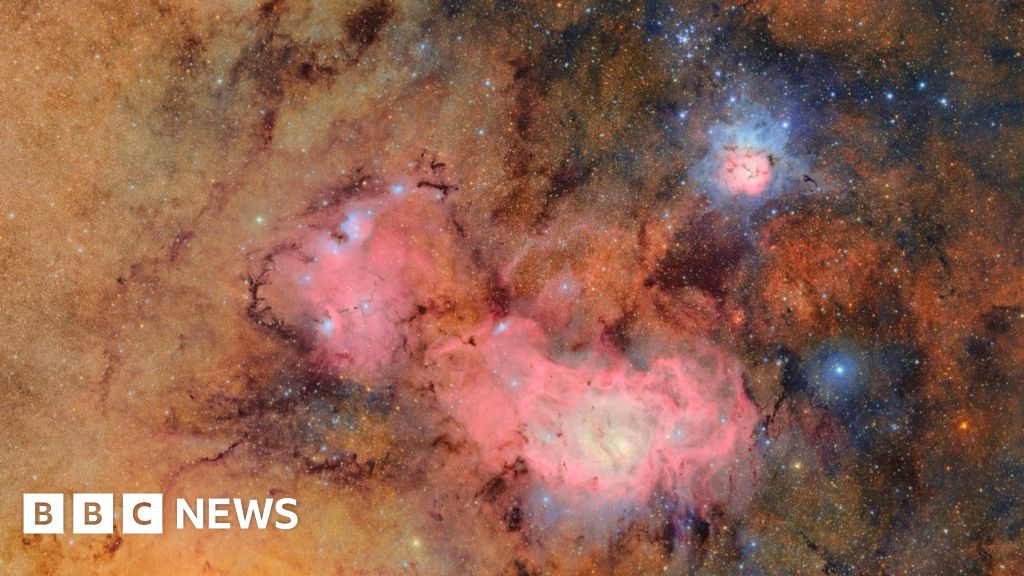
The Vera C. Rubin Observatory in Chile has unveiled its first celestial image, showcasing the Trifid and Lagoon nebulae in unprecedented detail. This powerful new telescope, equipped with the world’s most advanced digital camera, promises to transform our understanding of the universe. Scientists believe that if a ninth planet exists in our solar system, the Vera Rubin Telescope could discover it within its first year of operation.
Located on Cerro Pachón in the Chilean Andes, the observatory is strategically positioned in a region known for its clear, dark skies, ideal for astronomical observations. The telescope is expected to detect potentially hazardous asteroids near Earth and map the Milky Way, while also addressing fundamental questions about dark matter, a mysterious substance that constitutes most of the universe.
A New Era in Astronomy
The unveiling of the first image marks the beginning of a decade-long survey of the southern sky, capturing detailed snapshots every few nights. Professor Catherine Heymans, Astronomer Royal for Scotland, expressed her excitement, stating, “I personally have been working towards this point for about 25 years. For decades we wanted to build this phenomenal facility and to do this type of survey.”
The UK plays a significant role in this project, hosting data centers that will process the vast amounts of information gathered by the telescope. The observatory’s capabilities could potentially increase the number of known objects in our solar system tenfold.
Precision Engineering and Design
The Vera Rubin Observatory’s design is a testament to precision engineering. Its unique three-mirror system ensures high reflectivity and speed, allowing it to capture light from distant celestial objects. Guillem Megias, an active optics expert at the observatory, emphasized the importance of this capability, saying, “It’s really important to observe things from really far away which, in astronomy, means they come from earlier times.”
“When we got the first photo up here, it was a special moment,” Mr. Megias said. “When I first started working with this project, I met someone who had been working on it since 1996. I was born in 1997. It makes you realize this is an endeavor of a generation of astronomers.”
The observatory’s 3,200-megapixel camera, built by the US Department of Energy’s SLAC National Accelerator Laboratory, is capable of capturing images so high in resolution that they could reveal a golf ball on the Moon. This camera will continuously survey the night sky, capturing an image approximately every 40 seconds for about 8-12 hours each night.
Global Collaboration and Scientific Impact
Hundreds of scientists worldwide will analyze the data stream, which is expected to generate around 10 million alerts each night. The survey focuses on four main areas: mapping changes in the skies or transient objects, studying the formation of the Milky Way, mapping the Solar System, and understanding dark matter and the universe’s formation.
The observatory’s continuous observations will allow it to detect changes in the sky, providing real-time alerts to scientists and enabling them to study phenomena as they occur. This ability to repeatedly survey the same areas enhances its potential to make groundbreaking discoveries.
Implications for the Future
The Vera Rubin Observatory represents a significant leap forward in our quest to understand the universe. Its ability to capture detailed images and detect changes in the night sky will provide invaluable data for astronomers and astrophysicists. As the observatory continues its survey, it is poised to answer some of the most pressing questions in astronomy, from the nature of dark matter to the potential discovery of new celestial bodies.
As the world awaits further discoveries from this revolutionary telescope, the Vera Rubin Observatory stands as a testament to human curiosity and the relentless pursuit of knowledge. Its contributions to science will undoubtedly shape our understanding of the cosmos for generations to come.







